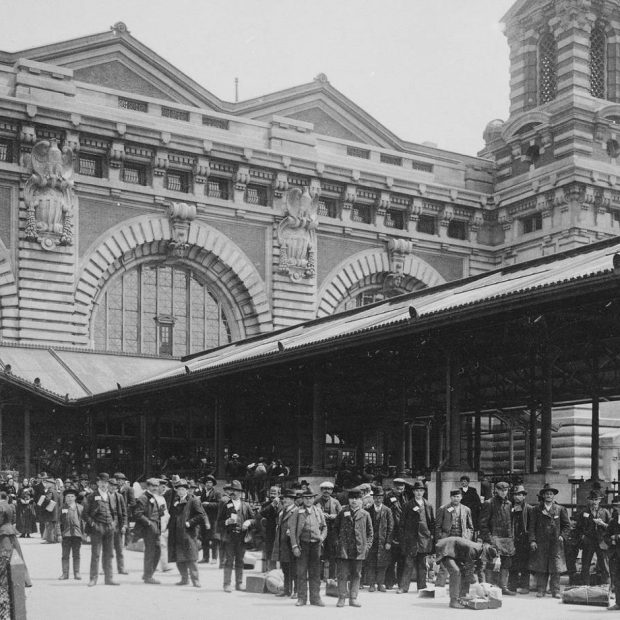
Probably the first European to see the area where New York stands today was the Florentine explorer Giovanni da Verrazzano. During an expedition with the aim of finding a western route from Europe to Asia, he anchored here with his La Dauphine on April 17, 1524, and continued his journey the next day.
85 years later, on September 2, 1609, the Englishman Henry Hudson, looking for a passage to India, sailed with his ship, the Half Moon, into what is now New York Harbor. On his return, he informed his employer, the Dutch West Indies Company, of the many beavers he saw there. The beaver fur trade was a lucrative business.
For the next several years the company employed a single trapper, Juan Rodriguez, there. In May 1624, several families landed in Noten Eylant (now Governors Island), who settled on the southern tip of Manhattan on behalf of the Dutch West Indies Company. New Amsterdam, as the place was given the name, grew to around 2500 residents over the next 40 years, at least half of whom had no Dutch roots.
READ: Nazi Summer Camps and a ‘Führer’ from Munich: 22,000 Sympathizers in Madison Square Garden
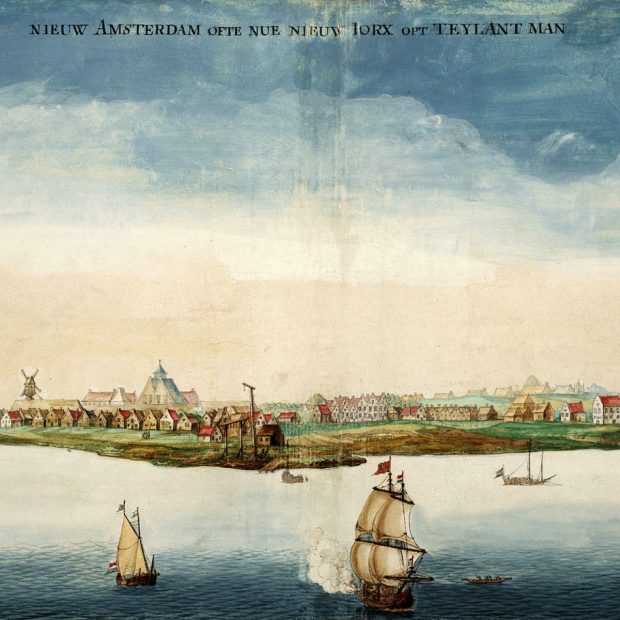
New Amsterdam 1664
On August 27, 1664, four English frigates sent by the Duke of York to conquer the place reached New Amsterdam. Since the English gave residents conditions that would not disturb their lives, such as free trade and freedom of religion, New Amsterdam was peacefully surrendered and renamed New York.
After the city fell under British rule and became part of the sprawling Empire, more immigrants came, the economy grew and the population increased. In 1776, the year America declared its independence, around 25,000 people lived here. No city in America was more cosmopolitan, only Philadelphia bigger.
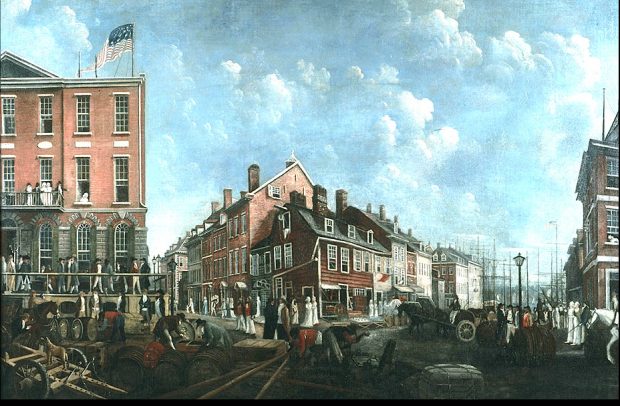
New York 1797 – corner of Wall Street and Water Streets – on the left the Tontine Cofffee House – people were already traded here – Painter: Francis Guy
The 19th century brought two great waves of immigration. In the 1850s, about two million immigrants, the vast majority from Western Europe, came to the United States through New York. Many were Irish fleeing the effects of the “Great Famine”. The immigrants who stayed in New York often moved to southern Manhattan, near the docks, factories, and foundries where the jobs were. They often lived in newly built, narrow, overcrowded apartment buildings called tenements.
READ:New York Subway: You Can Find World-Class Art There
Immigrant quarters often turned into slums, in which the mostly poor residents crowded together. There was often a lack of sewers and running water, and many people became ill. Neighborhoods were often dominated by a group of immigrants, like Kleindeutschland in southern Manhattan. In the middle of the century, New York was the largest city in the western hemisphere with about 700,000 inhabitants, more than half were immigrants, most of them from Ireland and Germany.
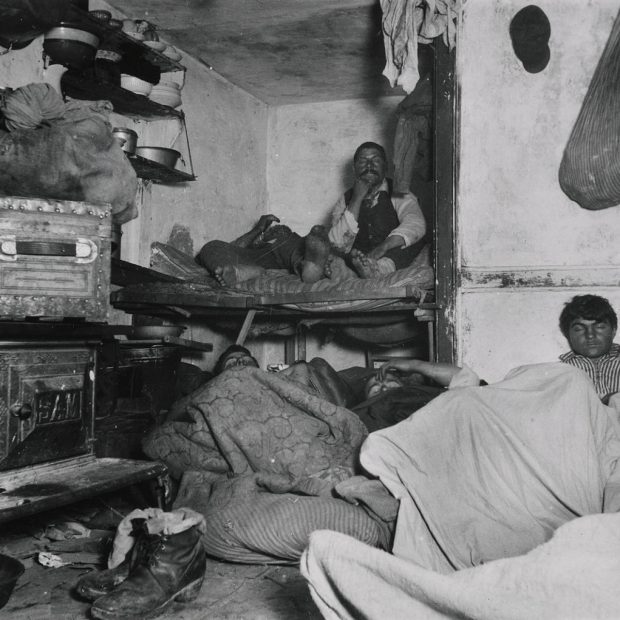
Immigrants on Bayard Street in southern Manhattan – 1889 – Photo: Jacab Riis
A second major wave of immigration began in the late 1880s when Russian and Polish Jews, southern Italians, Greeks, and people from the rest of southern and eastern Europe came to America. Those who stayed in New York lived mostly among themselves, and neighborhoods like Little Italy were formed during this time.
In 1910 there were 2.2 million people in Manhattan, over a million more than in 1880. The largest groups of immigrants were Russian Jews and Italians.
Note: Until 1898, New York City consisted only of Manhattan. As more and more people moved to Brooklyn, Queens, The Bronx, and Staten Island, they were incorporated into the City of New York. The population of New York City in 1910, including the other boroughs, was 4.7 million.
In the decades that followed, there were no large waves of immigrants from certain countries and relatively few immigrants remained in New York. At times, more people returned to their home countries than came. In the years after World War II, however, the biggest wave of migration that New York has ever seen began when the first of hundreds of thousands of Puerto Ricans began to settle in the city.
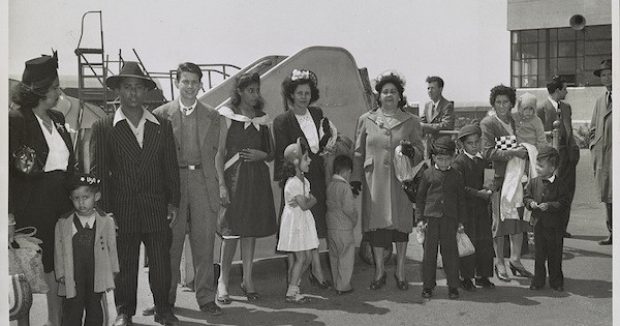
Puerto Ricans arrive at Newark Airport – 1947
As residents of a so-called ‘US territory‘, Puerto Ricans are American citizens and, despite a different language and culture, are not immigrants in the political and legal sense, but like people who came from Europe, they had their own language and culture.
In the late 1940s, US government agencies believed that the small, densely populated island would no longer be able to survive on its agriculture, primarily sugar beets. A plan arose to relocate parts of the rural population to American cities, where there were booming factories, but workers were lacking.
New York was the preferred destination for the newcomers. By the late 1950s, between 600,000 and 700,000 residents were Puerto Ricans, roughly one in ten. This made them one of the largest ethnic groups in New York and still is today.
In 1970 two thirds of all immigrants (excluding Puerto Ricans) came from Europe. Most of them were from Italy. In the decades that followed, the picture changed dramatically, with more and more immigrants from Asia, Latin America, and the Caribbean.
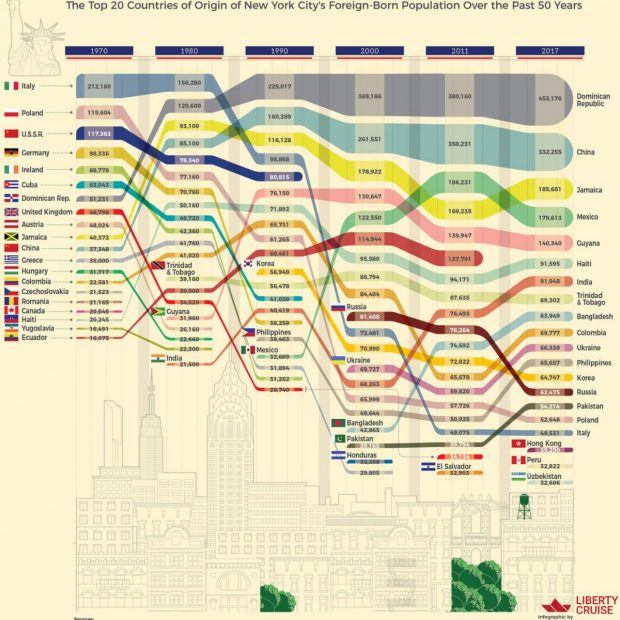
The Trump years were marked by little immigration. Biden is now planning to relax again and it will be seen how the trend will actually develop.
Instead of Italians, people from the Dominican Republic now make up the largest group of newcomers, and there are five times as many Chinese in New York today as there were 50 years ago. Mexicans, traditionally found almost exclusively in the southwestern United States, are now the fourth largest group of immigrants. The graphic shows the development very clearly.
Like us on Facebook for more stories like this: